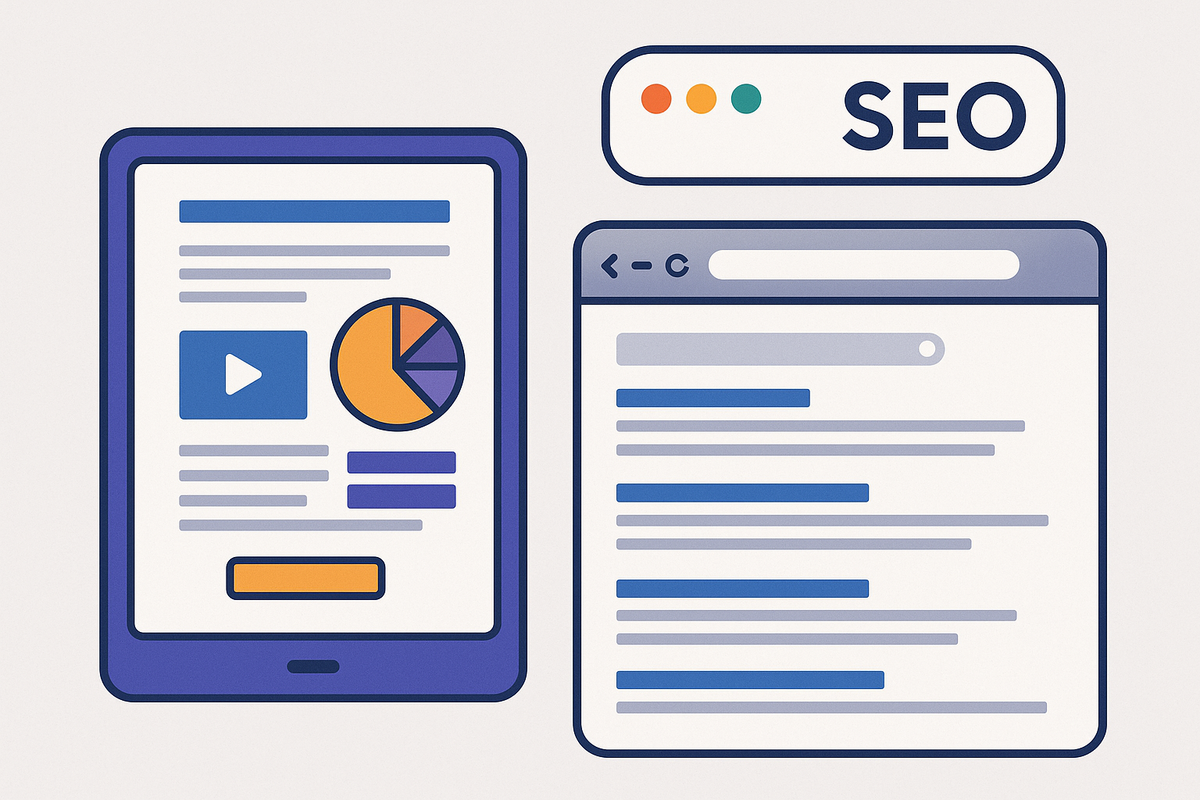Introduction: The Hidden Limitation of PDFs
For years, B2B marketers have relied on whitepapers in PDF format to demonstrate expertise, educate buyers, and capture leads. While these documents can provide valuable insights, they come with one major drawback—they’re nearly invisible to search engines. A PDF may rank occasionally, but it rarely performs as well as a structured, web-based page.
This is where interactive whitepapers change the game. By moving from static downloads to dynamic, portal-style experiences, businesses gain not only better engagement but also significant SEO advantages that PDFs simply cannot deliver.
Why PDFs Struggle with SEO
PDF whitepapers have clear content value, but they are limited when it comes to visibility and discoverability. Here’s why:
-
Limited Metadata Control: PDFs don’t allow the same optimization of meta titles, descriptions, and structured data that web pages do.
-
Poor Mobile Optimization: PDFs are clunky on smartphones, leading to higher bounce rates—something search engines penalize.
-
Low Engagement Signals: Users download PDFs and disappear, giving search engines no dwell-time or interaction signals.
-
Lack of Internal Linking: PDFs cannot easily connect readers to related blogs, case studies, or CTAs on your website.
In today’s SEO landscape, where Google rewards engagement, structured content, and user experience, PDFs are falling behind.
Interactive Whitepapers: SEO-Friendly by Design
Unlike static PDFs, interactive whitepapers are hosted as web-based portals. This means they inherit the full SEO power of a structured webpage while still offering the depth of a long-form document.
Here’s how they help B2B marketers rank beyond PDFs:
1. Indexable Content
Every section of an interactive whitepaper can be crawled and indexed by search engines. This ensures your insights surface in organic search results, reaching audiences before they even click “download.”
2. Optimized Metadata & Keywords
Interactive formats allow for meta tags, H1–H6 headings, alt text, and keyword placement—all essential for on-page SEO optimization. Marketers can strategically position target keywords while maintaining a natural reading experience.
3. Mobile Responsiveness
With Google’s mobile-first indexing, interactive whitepapers shine. Responsive design ensures smooth experiences on smartphones and tablets, reducing bounce rates and improving rankings.
4. Rich Engagement Signals
Unlike PDFs, portals allow users to click through tabs, complete quizzes, or watch embedded videos. These actions translate into longer dwell time and lower bounce rates—positive ranking factors for SEO.
5. Internal Linking Opportunities
Interactive whitepapers can be structured with links to related blogs, case studies, and product pages. This strengthens your website’s internal link architecture, distributing SEO authority more effectively.
6. Improved Backlink Potential
Because interactive whitepapers live online, they’re easier for other websites to link to. A well-designed interactive asset becomes a link-worthy resource, boosting domain authority.
Case Example: From Invisible PDF to SEO Magnet
Consider a SaaS company publishing a PDF on “The Future of Cloud Security.” The PDF gets downloads, but little organic traffic. When repurposed into an interactive portal:
-
The content was optimized with relevant H2s like “Cloud Security Trends 2025” and “AI in Threat Detection.”
-
A short embedded quiz asked readers about their top challenges.
-
CTAs linked directly to related solution pages.
Result? The interactive version drove 3x more organic visitors and contributed 40% more qualified leads compared to the PDF.
The Long-Term SEO Impact
Interactive whitepapers are more than just an engagement tool—they’re a content asset that compounds SEO value over time. As organic rankings improve, so does lead generation efficiency.
In other words, while PDFs rely on paid promotion or gated landing pages, interactive whitepapers continuously attract, engage, and convert through organic visibility.
Conclusion: Ranking Beyond PDFs
For B2B marketers, the move from PDFs to interactive whitepapers isn’t just about engagement—it’s about visibility, discoverability, and long-term SEO growth.
By turning whitepapers into SEO-friendly portals, companies unlock higher rankings, richer engagement, and stronger lead pipelines.
If you’re ready to take your content beyond static downloads and into the SEO future of lead generation, now is the time to act.
Want to see how interactive whitepapers can transform your SEO and lead gen?
Visit Whitepapers Online to start publishing smarter, ranking faster, and converting better.
You May Also Like: AI in Email Marketing: The Shift from Segments to Individuals

